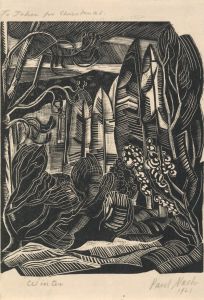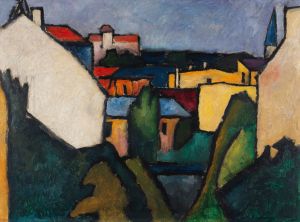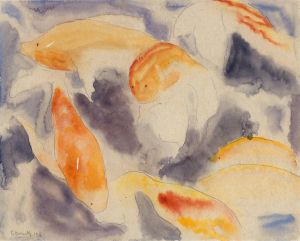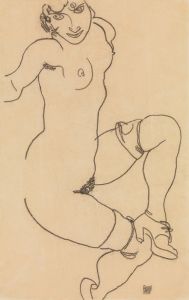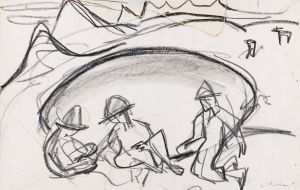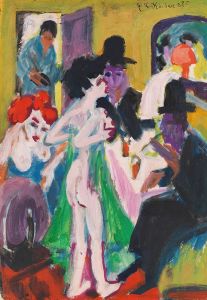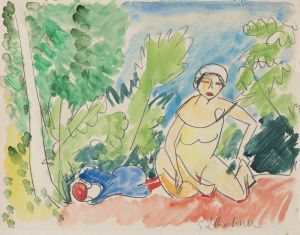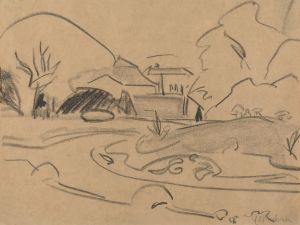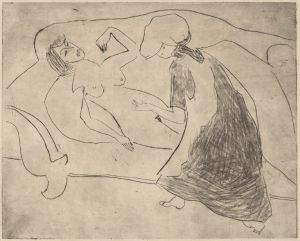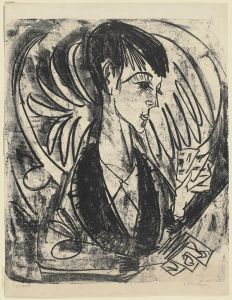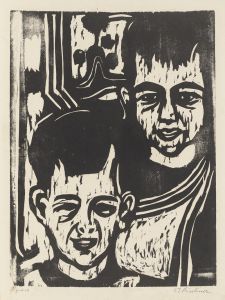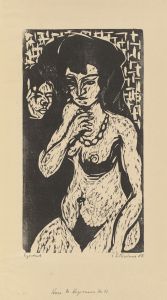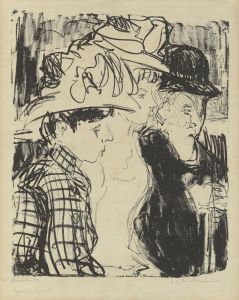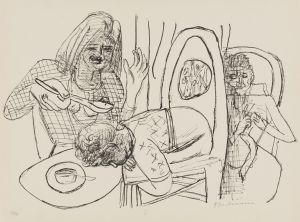
Two Nudes
A hand-painted replica of Ernst Ludwig Kirchner’s masterpiece Two Nudes, meticulously crafted by professional artists to capture the true essence of the original. Each piece is created with museum-quality canvas and rare mineral pigments, carefully painted by experienced artists with delicate brushstrokes and rich, layered colors to perfectly recreate the texture of the original artwork. Unlike machine-printed reproductions, this hand-painted version brings the painting to life, infused with the artist’s emotions and skill in every stroke. Whether for personal collection or home decoration, it instantly elevates the artistic atmosphere of any space.
Ernst Ludwig Kirchner's Two Nudes is a painting created by the German Expressionist artist, who was a founding member of the influential art movement Die Brücke (The Bridge). Kirchner, born in 1880, was known for his bold use of color, dynamic compositions, and exploration of the human form, often reflecting the anxieties and tensions of early 20th-century Europe. His works frequently depicted nudes, a subject central to the Expressionist movement's focus on raw emotion and the human experience.
Two Nudes exemplifies Kirchner's characteristic style, marked by elongated forms, angular lines, and a vivid, non-naturalistic color palette. The painting portrays two female figures, both nude, in a setting that is likely indoors. The figures are rendered with a sense of immediacy and emotional intensity, emphasizing their physicality and presence rather than adhering to traditional notions of idealized beauty. The brushwork is loose and expressive, contributing to the dynamic energy of the composition.
Kirchner's approach to the nude was influenced by his interest in non-Western art, particularly African and Oceanic sculptures, which he admired for their perceived authenticity and directness. This influence is evident in the simplified, almost sculptural treatment of the figures in Two Nudes. The painting also reflects the broader goals of Die Brücke, which sought to break away from academic traditions and embrace a more spontaneous, emotionally charged form of artistic expression.
The exact date of creation for Two Nudes is not definitively documented, but it is consistent with Kirchner's works from the early 1910s, a period when he was actively exploring themes of intimacy, human connection, and the natural world. During this time, Kirchner and other members of Die Brücke often worked in communal settings, drawing inspiration from one another and experimenting with new techniques and subjects.
Kirchner's career was profoundly affected by the political and social upheavals of his time. After serving in World War I, he struggled with physical and mental health issues, which influenced his later works. Despite these challenges, he remained a pivotal figure in modern art until his death in 1938.
Today, Two Nudes is recognized as an important example of Kirchner's contribution to Expressionism and his innovative approach to the human form. The painting is held in a private collection or museum, though its specific location and provenance may vary depending on exhibition records. Kirchner's legacy endures through his extensive body of work, which continues to be celebrated for its emotional depth and artistic innovation.





